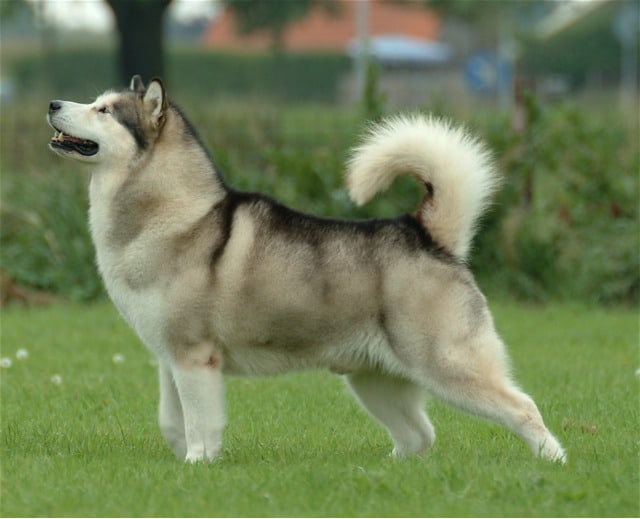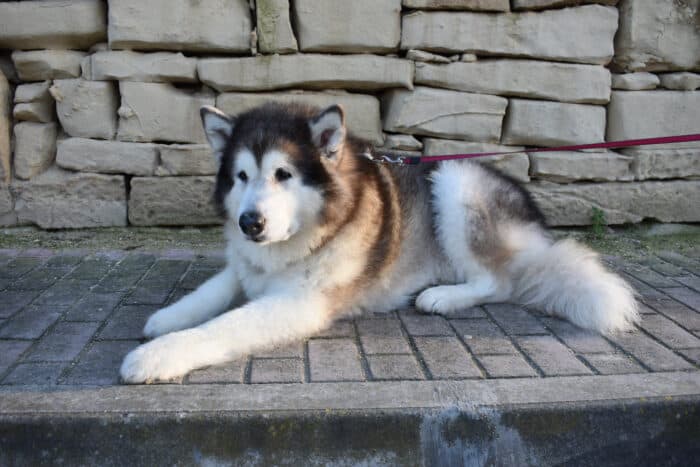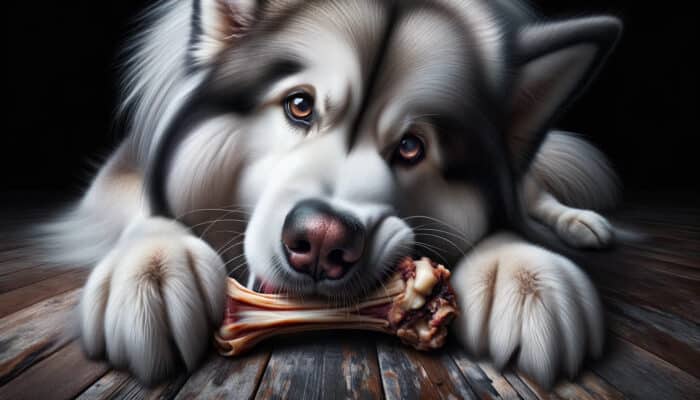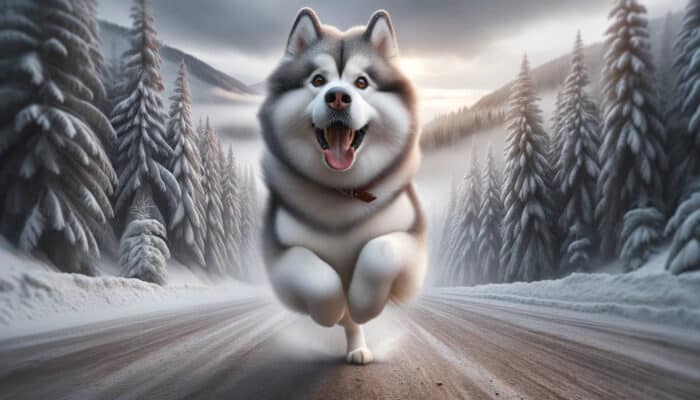The Alaskan Malamute is a powerful and ancient dog breed known for its strength and endurance. This breed is renowned for its intelligence and is often considered family-friendly, making it a favorite among many dog lovers.
Characterized by its large size and dense coat, the Alaskan Malamute is especially popular in colder regions. Its distinct features and abilities have made it a sought-after breed in various parts of the world.
Intelligent and Independent: Alaskan Malamutes require consistent training due to their smart yet independent nature.
Grooming Needs: Their dense double coat sheds heavily, especially during shedding seasons, and requires regular grooming.
Energy and Exercise: While friendly and sociable, they have a high energy level and need adequate exercise to stay happy and healthy.
Health Concerns: Some potential genetic conditions like hip dysplasia should be on the radar for potential owners.
Spitz Family Traits: Known for their strength, endurance, and wolf-like appearance, they are a part of the Spitz family of dogs.
Alaskan Malamute Breed – Quick Facts
| Feature | Description |
|---|---|
| Size | Large; Height range: 23-25 inches (58-63 cm) for females, 25-28 inches (63-71 cm) for males |
| Weight Range | 70-85 pounds (32-39 kg) for females, 85-100 pounds (39-45 kg) for males |
| Predominant Colors | Black and white, gray and white, sable and white, red and white |
| Fur Length and Type | Medium; Straight |
| Lifespan | 10-14 years |
| Activity Level | High |
| Intelligence Level | High |
| Ease of Training | Average |
| Good with Kids | With Supervision |
| Training Requirements | Standard |
| Known Health Issues | Hip dysplasia, cataracts, chondrodysplasia |
Physical Characteristics of the Alaskan Malamute
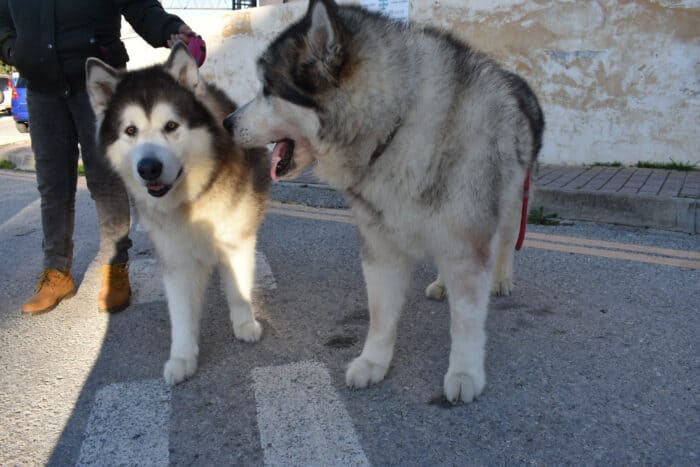
The Alaskan Malamute stands tall and proud, boasting a robust build. Females typically have a height ranging from 23 to 25 inches (58 to 63 cm) while males are slightly taller, measuring between 25 and 28 inches (63 to 71 cm).
The weight varies as well, with females weighing between 70 and 85 pounds (32 to 39 kg) and males weighing in at 85 to 100 pounds (39 to 45 kg).
This breed exhibits a muscular physique, with males being slightly bulkier than females.
An essential feature of the Alaskan Malamute is its coat. It possesses a medium-length straight coat that can come in various colors, including black and white, gray and white, sable and white, and red and white. This double coat not only gives them a majestic look but also protects them from harsh weather conditions.
When observing the head of an Alaskan Malamute, one can’t help but notice its broad skull and strong muzzle. The ears stand erect and are of medium size. Their almond-shaped eyes can be brown or blue, adding to their expressive face.
Distinguishing features of this breed include a plume-like tail that gently curves over its back and a sturdy neck.
Their movement is smooth and powerful, indicative of the strength and endurance that they are so well known for.
Alaskan Malamute Temperament & Personality
The Alaskan Malamute, at its core, is a friendly and affectionate breed. Their demeanor often oscillates between playful and laid-back, depending on the environment. These dogs carry a natural inclination to bond and are eager to be a part of family activities.
Interaction is a pivotal aspect of their personality. With humans, Alaskan Malamutes are generally sociable and enjoy forming connections. However, their interactions with other dogs and animals might vary, with some displaying a dominant nature, especially with same-gender dogs. Early socialization can help in fostering amiable relations.
Training sessions with an Alaskan Malamute can be quite engaging. Their high intelligence level means they grasp new commands relatively quickly. Yet, their independent streak may require a trainer to employ patience and consistent techniques.
An active lifestyle suits the Alaskan Malamute best. Their high energy levels necessitate regular exercise to keep them both physically and mentally stimulated. Without proper outlets for their energy, they can become restless.
Adapting to various living situations comes naturally to the Alaskan Malamute. While they thrive in homes with ample space, they can adapt to apartment living, provided their exercise needs are met.
Their friendly nature makes them a good fit for families. However, interactions with young children should be supervised, and the dog’s boundaries respected.
As for other pets, it’s essential to gauge the Malamute’s temperament and introduce them slowly.
What Does The Ideal Home For an Alaskan Malamute Look Like?
The Alaskan Malamute is a breed that thrives in open spaces. Ideally, a home with a spacious backyard would be perfect for them. This allows them to move freely, play, and expend their energy. If the yard is present, secure fencing is a must. These dogs are known for their strength and determination; hence, a robust fence ensures they remain within the boundaries.
In terms of family settings, the Alaskan Malamute can fit well into various dynamics. They’re protective and can be excellent guardians for families. For households with children, it’s essential to teach the young ones how to approach and treat the dog.
Elderly members can also find companionship in Malamutes, though care should be taken due to the dog’s size and strength. Families with other pets, especially smaller ones, should introduce the Malamute gradually and monitor their interactions.
Exercise is a fundamental need for the Alaskan Malamute. A home that provides easy access to parks or trails would be beneficial. These dogs enjoy activities such as hiking, pulling sleds, or even simple fetch games. It’s essential to ensure they have a designated space where they can play and exercise without restrictions.
Breed-specific home considerations also include their tolerance for varying weather conditions. The Alaskan Malamute’s thick coat makes them well-suited for colder climates. However, during warmer months, it’s essential to provide them with a cool and shaded area to rest.
A quiet environment might not be crucial, but given their alert nature, a serene setting can be more conducive for them.
Can Alaskan Malamutes be left alone?
Alaskan Malamutes have a moderate capacity for solitude. While they value companionship, they can manage short periods alone. However, extended durations might lead to feelings of isolation or boredom, potentially resulting in destructive behaviors. Providing toys or puzzles can help keep them engaged. Still, regular human interaction is vital for their emotional well-being.
Ideal Owner for an Alaskan Malamute
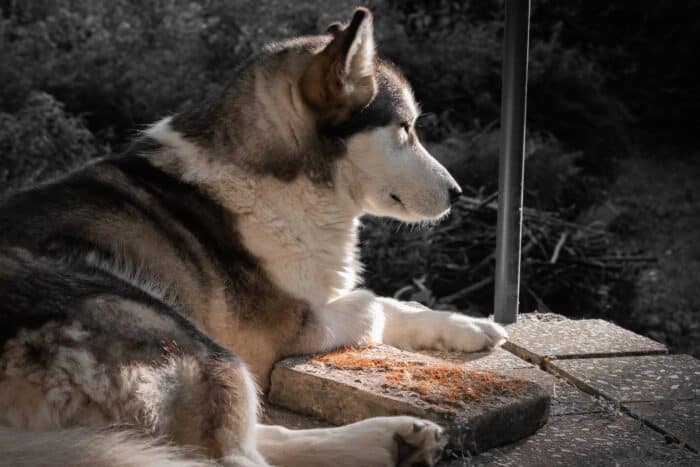
The Alaskan Malamute, with its vibrant energy and independent nature, benefits from an owner who understands canine behaviors and has prior experience with dogs. While they can be a good match for first-time dog owners, a seasoned handler might find it easier to navigate the breed’s unique quirks and requirements.
Matching the dog’s energy is crucial. Active individuals or families who enjoy outdoor activities would be an excellent fit for the Alaskan Malamute. This breed isn’t one for the sedentary lifestyle; they thrive with regular exercise and mental stimulation.
Training commitment is non-negotiable. Alaskan Malamutes are smart and can pick up commands quickly. However, their independent streak can sometimes make them appear stubborn. An ideal owner understands the value of consistent, positive reinforcement training methods.
Time is another essential factor. Bonding, exercise, training, grooming – the Alaskan Malamute demands time in all these areas. An owner willing to invest time will find a loyal, loving companion in return.
Are Alaskan Malamutes good with kids?
Yes, Alaskan Malamutes generally have a gentle disposition towards children. Their playful nature aligns well with the energy levels of kids. However, due to their size and strength, supervision is recommended during interactions.
Ensuring that both the child understands the dog’s boundaries and that the dog is well-socialized can result in harmonious relationships.
Are Alaskan Malamutes aggressive?
Alaskan Malamutes are not inherently aggressive. However, like any breed, they can exhibit aggressive tendencies if not properly trained or socialized. Typically, they can be wary of unfamiliar stimuli or strangers.
Early socialization and consistent training can help mitigate any aggressive tendencies. It’s essential to understand their body language and address any signs of discomfort or stress promptly.
How Popular Is This Breed?
The Alaskan Malamute, with its majestic appearance and amiable nature, has gained popularity in various parts of the world.
In the USA, this breed is highly favored, especially in regions that experience colder climates, thanks to their thick coat and historical background as sled dogs.
The breed’s versatility, ability to work in packs, and history as an essential part of native Alaskan tribes have contributed to its popularity.
In other parts of the world, the Alaskan Malamute is often admired for its strength, endurance, and unique appearance. Its historical significance and stories of its adventures in the Arctic have added to its allure.
Some areas also value the breed for its capabilities in dog sports and other activities that require strength and stamina.
Alaskan Malamute Grooming
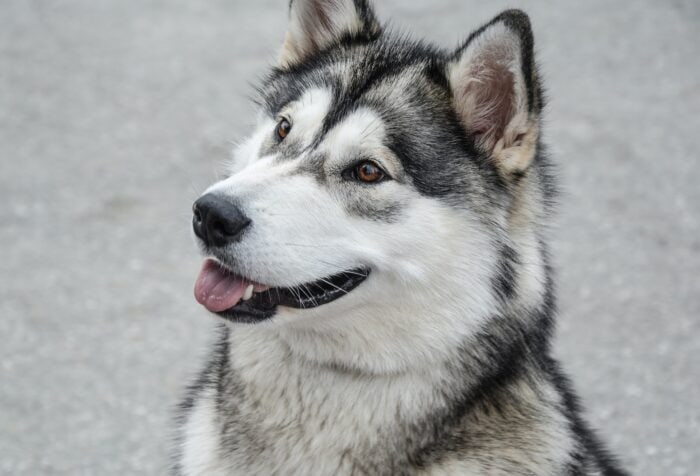
Grooming is an integral aspect of caring for an Alaskan Malamute. Their dense, double coat requires regular maintenance to keep it in top condition. Brushing at least once a week is essential to prevent matting and remove loose fur. During shedding seasons, this frequency might need to increase.
While their coat is self-cleaning to an extent and doesn’t have a strong odor, periodic baths are still essential. It’s vital to use dog-specific shampoos and conditioners that cater to their coat type. Thorough drying post-bath ensures no moisture is trapped, which could lead to skin issues.
Some grooming tasks might seem daunting for novice owners. Areas like nail trimming or ear cleaning, if unfamiliar, can be left to professionals. It’s also beneficial to regularly check their paws, especially after outdoor activities, for any lodged debris or injuries.
One challenge that some Malamute owners might face is the breed’s propensity to dig. It’s a natural behavior, but it can result in a messy dog. Regular grooming sessions, coupled with providing designated digging spots, can help manage this behavior.
Do Alaskan Malamutes shed?
Yes, Alaskan Malamutes do shed. Their shedding pattern is seasonal, with heavy shedding occurring typically twice a year.
During these times, daily brushing can help manage the loose fur and reduce the amount of hair around the home. Investing in a good quality brush and regular grooming routines ensures a cleaner living environment and a healthier coat for the dog.
Alaskan Malamute Diet: What Do They Eat?
The Alaskan Malamute’s dietary requirements are reflective of its active nature and robust build. Key nutrients, such as proteins, fats, and carbohydrates, play a pivotal role in maintaining their energy levels and overall health. Quality dog food, whether kibble, wet food, or raw, should be the primary source of their nutrition. Owners should be aware of common allergies or sensitivities that might affect Malamutes, such as certain grains or protein sources.
As they transition through life stages, from puppyhood to their senior years, their dietary needs will shift. Puppies, with their rapid growth, require food rich in protein and calories. As they age, the focus might shift to maintaining a healthy weight and supporting joint health.
Treats and snacks are a valuable training tool and a way to bond with your Malamute. However, it’s essential to choose treats that align with their dietary requirements. Some treats might also serve a dual purpose, like dental chews that help in maintaining oral health.
Human foods can be tricky. While some, like lean meats or certain vegetables, can be safe in moderation, others are strictly off-limits. Foods like chocolate, grapes, and onions are toxic and should be avoided.
One of the common dietary challenges with Alaskan Malamutes is their propensity to gain weight. Regular weight checks and portion control are vital to prevent obesity, which can lead to other health issues.
How to Feed an Alaskan Malamute
Feeding an Alaskan Malamute requires some thoughtfulness to ensure they receive the right nutrients in the right amounts. Establishing a routine is crucial. Setting fixed meal times, typically twice a day for adults, helps regulate their metabolism and prevents overeating. The choice of dog bowl can also make a difference. Stainless steel or ceramic bowls are easy to clean and durable.
While free feeding, where food is available at all times, might seem convenient, it’s not recommended for Malamutes. They can overeat, leading to weight gain. Instead, measured meal portions based on their age, weight, and activity level are advisable.
Malamutes, with their thick coats, can get quite hot after activities. It’s essential to allow them to cool down before feeding to prevent issues like bloat. Fresh water should always be available, ensuring they stay hydrated, especially after exercise or during warmer months.
How Much to Feed an Alaskan Malamute
Determining the right amount of food for an Alaskan Malamute depends on various factors. These include the dog’s age, weight, activity level, and overall health. Generally, an adult Malamute requires about 1,500 to 2,500 calories per day. However, this is a broad range, and individual needs can vary.
Puppies, with their rapid growth and high energy, will require more calories per pound than adults. As they grow, the amount of food and calorie intake should adjust accordingly to ensure they don’t become overweight.
Active Malamutes, especially those involved in activities like sledding or agility, may require more calories to sustain their energy levels. On the other hand, older or less active dogs might need fewer calories to prevent weight gain.
It’s essential to monitor your Malamute’s weight regularly. Adjusting portion sizes based on weight and condition ensures they maintain a healthy weight. Signs like visible ribs or a tucked abdomen might indicate underfeeding, while lack of a discernible waist or fat deposits might suggest overfeeding.
Health Considerations
Alaskan Malamutes, like all breeds, have certain health concerns to be aware of. One prevalent issue in this breed is hip dysplasia, a genetic condition where the thigh bone doesn’t fit into the hip joint correctly. This can lead to arthritis or even lameness in severe cases. Regular check-ups and early detection can help manage the condition.
Another concern is chondrodysplasia, a hereditary disorder affecting the bones’ growth, leading to dwarfism. Symptoms can range from mild to severe, with some dogs experiencing pain or mobility issues.
The breed’s thick double coat makes them more prone to skin issues, especially if not groomed properly. This includes problems like hot spots, fungal infections, or allergies.
In terms of lifespan, a well-cared-for Alaskan Malamute typically lives between 10 to 14 years. As they age, they might face health issues common to senior dogs, like arthritis or vision problems. Regular veterinary check-ups, a balanced diet, and moderate exercise can support them through their senior years.
How much exercise do Alaskan Malamutes need?
The Alaskan Malamute is a breed built for stamina and endurance. Originating from a lineage of working dogs used for sled pulling, these canines naturally possess a high energy level. Typically, an Alaskan Malamute requires a significant amount of exercise, around one to two hours daily. This can be a combination of walks, play sessions, and other physical activities.
Given their history, they enjoy activities that mimic their sled-pulling roots, like carting or weight pulling. They also excel in activities like hiking, especially in cooler climates. Despite their size, they can be agile, making them suitable for agility courses with proper training.
While exercise is crucial for their physical health, it’s equally vital for their mental well-being. Malamutes are intelligent and thrive when given tasks or challenges. Without adequate exercise, they can become bored, leading to destructive behaviors.
However, it’s essential to be mindful of their limits. Over-exercising, especially in hot weather, can be harmful. Always ensure they have access to fresh water during activities and monitor them for signs of fatigue or overheating.
Alaskan Malamute Training
Training an Alaskan Malamute is a rewarding endeavor but requires patience and consistency. Starting training early, ideally during puppyhood, establishes a foundation for good behavior. Basic commands like sit, stay, and come are fundamental and serve as building blocks for more advanced training.
Socialization is paramount for Malamutes. Introducing them to various environments, animals, and people in their early months helps shape well-adjusted, confident adult dogs. Positive experiences during this crucial period can prevent unwanted behaviors and fears later on.
While they are intelligent and capable of learning quickly, Malamutes have an independent streak. They can sometimes be stubborn or choose to do things their way. This trait underscores the importance of consistency in training. Using positive reinforcement, such as treats or praise, yields better results than harsh methods.
Malamutes have a strong prey drive, making recall training essential. Ensuring they respond reliably to commands, especially in outdoor settings, is crucial for their safety.
For those looking to challenge their Malamutes further, advanced training opportunities abound. From agility courses to service dog training, these dogs are versatile and can excel in various disciplines with the right guidance.
House manners, like not jumping on guests or counter-surfing, are equally important. Potty training, while relatively straightforward with this breed, requires consistency and patience.
Are Alaskan Malamutes easy to train?
Training an Alaskan Malamute can be both a joy and a challenge. Due to their intelligence, they pick up commands quickly when motivated. However, their independent nature means they sometimes choose when they want to obey. This trait doesn’t necessarily mean they are hard-headed; they simply have a strong will.
Consistency is the key to training a Malamute. Regular training sessions, using positive reinforcement techniques like treats or praise, often yield the best results. Setting clear boundaries and being consistent in enforcing them helps the dog understand what’s expected.
While they might test limits occasionally, especially during their adolescent phase, with patience and persistence, they can be well-trained companions. It’s beneficial for Malamute owners to have some prior dog training experience, or at least to be prepared to invest time in understanding canine behavior and training techniques.
Are Alaskan Malamutes smart dogs?
Alaskan Malamutes are undeniably smart. Their intelligence manifests in various ways, from quickly picking up new commands to showcasing problem-solving skills. They have a keen sense of their environment and can often anticipate their owner’s actions or routines.
Their learning speed is commendable. With proper training, they can master a new command in a relatively short period. Additionally, their ability to remember and recall learned behaviors, even after a long time, is a testament to their cognitive abilities.
However, their intelligence is often accompanied by an independent streak. While they understand commands and cues, they might sometimes choose to act on their own terms. This behavior isn’t necessarily defiance but rather an expression of their innate desire to think for themselves.
What are the drawbacks of Alaskan Malamutes?
Every breed has its challenges, and Alaskan Malamutes are no exception. One of the primary behavioral challenges with Malamutes is their high energy level. Without proper outlets for this energy, they can become destructive, digging up yards or chewing on furniture.
Health-wise, Malamutes are prone to certain genetic conditions like hip dysplasia. These health concerns can lead to increased veterinary costs and emotional stress for the owner. Early screening and regular check-ups can help manage these issues.
Grooming is another area where Malamutes can be high-maintenance. Their thick double coat requires regular brushing to prevent matting and to keep it in good condition. They also shed heavily, especially during the shedding seasons, which can be a lot to handle for some owners.
Their strong prey drive can be a challenge, especially in households with smaller pets. Proper training and socialization are essential to manage this instinct.
Lastly, their independent nature, while endearing, can sometimes be misconstrued as stubbornness. Training a Malamute requires patience and understanding of their unique temperament.
Popular Alaskan Malamute Mixed Breeds
Mixed breeds have gained popularity over the years for various reasons, and the Alaskan Malamute is no exception. Mixing breeds can often result in a combination of the best traits from both parent breeds, whether in terms of temperament, health, or aesthetics.
One common reason for creating mixed breeds with the Alaskan Malamute is to achieve a particular look or temperament. For instance, a mix might inherit the Malamute’s size and strength combined with the gentleness or playfulness of another breed.
Some popular Alaskan Malamute mixes include:
Alaskan Malamute and Siberian Husky (Alusky): This mix often results in a dog with a striking appearance, combining the best physical traits of both breeds. They are energetic, intelligent, and make excellent family pets when properly trained.
Alaskan Malamute and German Shepherd (Alaskan Shepherd): This mix produces a loyal and protective dog, combining the Malamute’s strength with the German Shepherd’s guarding instincts. They are often used in roles that require protection or security.
Alaskan Malamute and Golden Retriever (Alaskan Goldenmute): This blend often results in a friendly and sociable dog, combining the Malamute’s endurance with the Golden Retriever’s gentle nature. They are great with families and get along well with other pets.

